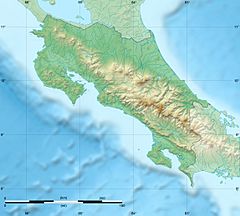Craugastor phasma facts for kids
Quick facts for kids Craugastor phasma |
|
|---|---|
| Conservation status | |
| Scientific classification | |
| Genus: |
Craugastor
|
| Species: |
phasma
|
| Synonyms | |
|
Eleutherodactylus phasma Lips and Savage, 1996 |
|
The Craugastor phasma is a very rare type of frog that belongs to the Craugastoridae family. It is found only in southeastern Costa Rica. So far, scientists have only ever seen one of these frogs! This single frog was found in 1992 in a protected area called Las Tablas, near the border with Panama.
This frog is special because of its unusual gray-white color, which makes it look a bit like a ghost. At first, people thought it might be an albino version of another frog species. However, this frog also has unique body features that make it different from other frogs. Still, scientists are not completely sure if it's a totally separate species or not.
Contents
Why is it called Craugastor phasma?
The name phasma comes from an ancient Greek word that means "apparition" or "spirit." This name was chosen because of the frog's ghost-like appearance.
What does it look like?
The only Craugastor phasma ever found was an adult female. It was about 48 millimeters (almost 2 inches) long from its snout to its rear end.
Most of its body, both on its back and belly, is a uniform gray-white color. The only dark parts are its black eyes and a few scattered black marks on its head and back legs. Its skin is smooth. The frog's head is a little wider than it is long. It has a rounded snout and sharp ridges above its eyes. Its eardrum (called the tympanum) is oval-shaped and easy to see. Like many frogs, its fingers and toes have special pads called disks, and its toes have a small amount of webbing at their base.
Where does it live and why is it in danger?
The single Craugastor phasma was discovered near a rocky stream in a lower montane rainforest. This area is about 1,850 meters (about 6,070 feet) above sea level. Scientists watched this area regularly for two years, but they never saw another one of these frogs.
The place where the frog was found is part of a special protected area called the La Amistad Biosphere Reserve. This helps protect its habitat. However, when the only known Craugastor phasma was found, it was sick. Other frogs in the area were also unwell or dying. This suggests that a disease could be a big threat to this very rare species.
See also
 In Spanish: Craugastor phasma para niños
In Spanish: Craugastor phasma para niños



